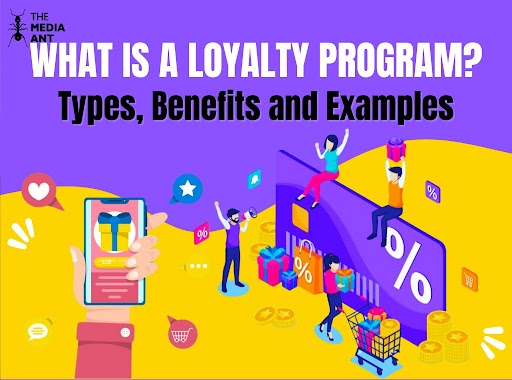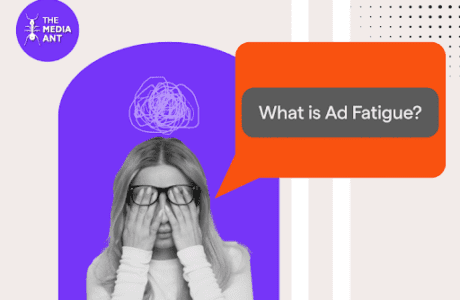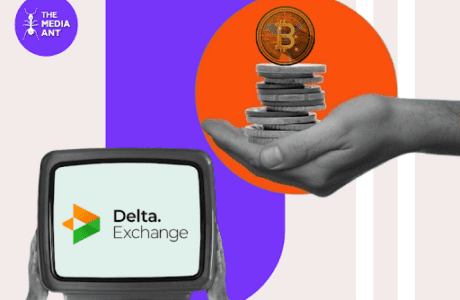Loyalty programs stand as indispensable tools in the realm of modern Advertising, serving as potent means to both attract and maintain a loyal customer base. But what precisely constitutes a loyalty program? In this comprehensive discourse, we will delve into the essence of loyalty programs, exploring their types, benefits, and real-world examples. Whether you’re a business owner seeking to integrate a loyalty program into your Advertising strategy or a consumer keen on understanding the perks they entail, this guide will furnish you with invaluable insights into this pivotal facet of contemporary marketing.
What defines a Loyalty Program?
A loyalty program embodies a strategic approach within Advertising frameworks, meticulously crafted to incentivize customers to repeatedly engage with a brand or business by proffering rewards, discounts, or exclusive perks. Customers invariably accrue points or rewards for each purchase or interaction, subsequently redeeming them for future discounts, complimentary products, or other advantageous offerings. These programs are engineered to nurture customer loyalty, stimulate repeat purchases, and augment customer lifetime value by fostering a gratifying and enduring relationship between the business and its clientele.
Types of Loyalty Program
There are several types of loyalty programs commonly employed by businesses:
1. Points-Based Programs
Points-based loyalty programs are among the most popular types, wherein customers earn points for each purchase they make or for specific actions they take, such as signing up for a membership, referring friends, or engaging with the brand on social media. These points accumulate over time and can be redeemed for rewards, discounts, or exclusive perks offered by the business. The more points a customer accumulates, the greater the rewards they can access. Points-based programs incentivize repeat purchases and foster customer loyalty by providing tangible benefits for ongoing engagement with the brand.
2. Tiered Programs
Tiered loyalty programs offer customers different levels of rewards and benefits based on their level of engagement, spending, or loyalty. Customers start at a base level and can progress to higher tiers by meeting specific criteria, such as spending thresholds or points accumulation. Each tier unlocks increasingly valuable rewards, such as exclusive discounts, priority access to products, or personalized services. Tiered programs incentivize customers to increase their engagement with the brand and foster long-term loyalty by offering ongoing incentives for progression.
3. Punch Card Programs
Punch card programs provide customers with a physical or digital card that is stamped or scanned with each purchase. After a predetermined number of purchases, typically indicated by completed punches or scans, customers earn a free or discounted item. These programs offer a simple and tangible incentive for repeat purchases, encouraging customer loyalty through the prospect of earning a valuable reward. Punch card programs are popular among small businesses and service-oriented establishments seeking to reward regular patrons and drive repeat business.
4. Cashback Programs
Cashback programs reward customers with a percentage of their purchase amount back in the form of cash, credit, or points. When customers make eligible purchases, they receive a predetermined percentage of the purchase price refunded to them. This incentivizes repeat purchases by providing a tangible benefit for shopping with the brand. Cashback programs are popular among credit card issuers, online retailers, and financial institutions, offering customers a straightforward way to save money and earn rewards on their everyday purchases.
5. Subscription Programs
Subscription programs require customers to pay a recurring fee in exchange for access to exclusive benefits, discounts, or products. Typically, customers sign up for a subscription and receive regular deliveries of products or services, often at a discounted price compared to one-time purchases. These programs foster customer loyalty by offering convenience, value, and a sense of belonging to a community of subscribers. Subscription programs are prevalent in industries such as media streaming, meal delivery, beauty products, and software services, catering to customers’ ongoing needs and preferences.
6. Coalition Programs
Coalition programs involve multiple businesses collaborating to offer a shared loyalty program, allowing customers to earn and redeem rewards across different brands or industries. Participants in coalition programs can accumulate points or rewards through purchases made at any of the participating businesses, providing flexibility and variety in reward options. These programs expand the reach of individual businesses’ loyalty efforts, attract a broader customer base, and enhance the overall value proposition for customers by offering diverse earning and redemption opportunities across various products and services.
How does the customer loyalty Program work?
Customer loyalty programs are designed to reward customers for their repeat business and encourage them to continue purchasing from a particular company or brand. While the specifics can vary greatly depending on the company and industry, here’s a general overview of how a customer loyalty program might work:
1. Sign-Up
Customers typically need to sign up for the loyalty program either online, in-store, or through a mobile app. This usually involves providing some basic information such as name, email address, and possibly other details like birthday or preferences.
2. Earning Points or Rewards
Once enrolled, customers can start earning points or rewards for their purchases. This could be based on a variety of factors such as the amount spent, frequency of purchases, or specific actions like referring friends or completing surveys. Points earned might be redeemable for discounts, free products, or other perks.
3. Tiered Programs
Some loyalty programs have tiered structures where customers can unlock additional benefits as they reach higher levels. For example, a basic tier might offer a small discount on purchases, while a higher tier could include exclusive access to sales or events, personalized offers, or even dedicated customer service.
4. Communication and Engagement
Companies often communicate with members of their loyalty programs through email, mobile notifications, or other channels to keep them informed about special offers, promotions, or new rewards. This helps keep customers engaged with the program and encourages them to continue participating.
5. Redemption
Once customers have accumulated enough points or rewards, they can typically redeem them for discounts, free products, gift cards, or other benefits. Redemption options may vary depending on the program and the preferences of the customer.
Feedback and Improvement: Successful loyalty programs often incorporate feedback mechanisms to gather insights from customers about their experiences and preferences. This allows companies to continually refine and improve their program to better meet the needs of their customers.
Benefits of Loyalty Programs
Loyalty programs offer several benefits both to businesses and their customers. Here are five key points highlighting the advantages of loyalty programs:
1. Customer Retention
Loyalty programs are effective tools for retaining existing customers. By offering rewards and incentives for repeat purchases, businesses can foster a sense of loyalty among their customer base, reducing the likelihood of them switching to competitors.
2. Increased Customer Lifetime Value
Loyal customers tend to spend more over time. By encouraging repeat purchases and fostering long-term relationships, loyalty programs can increase the lifetime value of customers, resulting in higher overall revenue for the business.
3. Data Collection and Insights
Loyalty programs provide valuable data and insights into customer behavior and preferences. Businesses can use this information to personalize marketing efforts, tailor product offerings, and improve the overall customer experience.
4. Word-of-Mouth Marketing
Satisfied and loyal customers are more likely to recommend a business to friends and family. Loyalty programs can incentivize referrals through rewards or bonuses, effectively turning loyal customers into brand advocates and driving word-of-mouth marketing.
5. Competitive Advantage
In competitive markets, loyalty programs can differentiate a business from its competitors. Offering unique rewards, exclusive perks, or a seamless loyalty experience can attract new customers and help the business stand out in a crowded marketplace.
Loyalty Program Examples
1. Myntra Insider (Fashion & Lifestyle)
Offered by the popular online fashion retailer Myntra, this program rewards loyal customers with points for shopping, writing reviews, and participating in promotional activities. There are three tiers (Insider, Select, and Elite) with increasing benefits like free delivery, early access to sales, and priority customer support .
2. Zillion (Multi-Brand)
Formerly known as Payback, Zillion is one of India’s largest multi-brand loyalty programs. It partners with over 100 brands across various sectors, including retail, travel, entertainment, and financial services. Customers earn points for shopping, dining, and using partner services, which can be redeemed for vouchers, discounts, or merchandise.
3. InterMiles (Travel & Lifestyle)
A co-branded program by airlines Jet Airways and Etihad Airways, InterMiles rewards members for flying, staying at partner hotels, shopping with select brands, and more. Members earn InterMiles that can be redeemed for flights, free stays, lounge access, merchandise, and other travel-related perks .
4. Flipkart Plus (E-commerce)
E-commerce giant Flipkart offers a premium membership program called Flipkart Plus. For a subscription fee, members enjoy benefits like free shipping, early access to deals, and exclusive product launches.
5. Big Bazaar (Grocery)
Big Bazaar, a popular grocery chain in India, offers a loyalty program called Big Bazaar Bachat Card. Customers earn points for every purchase, which can be redeemed for discounts on future purchases. The program also offers special offers and promotions to cardholders.
Conclusion
In conclusion, loyalty programs represent a dynamic strategy for businesses to foster long-term relationships with their customers. By understanding the various types of loyalty programs, harnessing their benefits, and drawing inspiration from successful examples, companies can create effective loyalty initiatives that drive customer retention and satisfaction. As consumers, we can leverage loyalty programs to maximize value and rewards from the brands we patronize. With the right approach, loyalty programs can be a win-win for both businesses and their loyal clientele, shaping a landscape where customer loyalty is rewarded and cherished.
FAQs on Loyalty Program
1. What is the full form of loyalty?
The full form of “loyalty” is the quality or state of being loyal, which encompasses faithfulness, allegiance, and devotion to a person, organization, cause, or ideal, often demonstrated through consistent support and commitment.
2. Why use loyalty programs?
Loyalty programs are utilized to incentivize and retain customers by offering rewards, discounts, or exclusive perks for repeat engagement. They foster customer loyalty, encourage repeat purchases, increase customer lifetime value, and cultivate positive relationships between businesses and their clientele.
3. What are the three levels of loyalty?
The three levels of loyalty are cognitive loyalty, affective loyalty, and cognitive loyalty. Cognitive loyalty involves rational considerations, affective loyalty is based on emotional connections, and cognitive loyalty reflects the intention or behavior to repeatedly patronize a brand or business.
4. What is the value of a loyalty program?
The value of a loyalty program lies in its ability to foster customer loyalty, encourage repeat purchases, increase customer retention, enhance brand affinity, gather valuable customer data, drive revenue growth, and differentiate a business from competitors in a crowded marketplace.
5. What is the formula for a loyalty program?
The formula for a loyalty program typically involves incentivizing customer engagement through rewards, discounts, or exclusive perks, wherein customers earn points or rewards for each purchase or interaction, which can be redeemed for future benefits, fostering long-term customer loyalty and retention.





